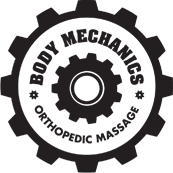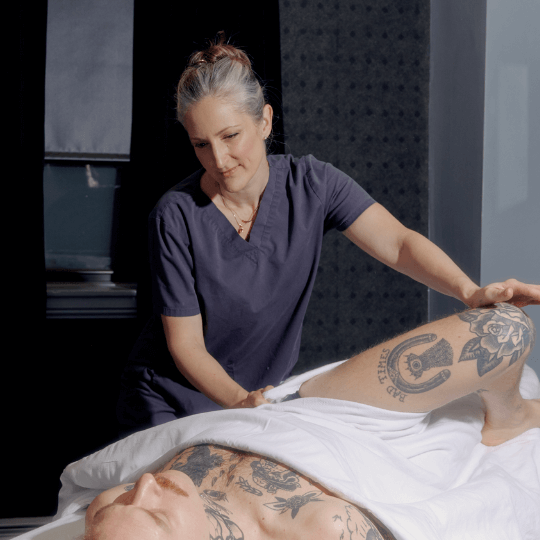What the heck are we doing with Orthopedic Massage?
So this post is inspired by my frustration at some of the myths that perpetrate the massage industry through poor education, misinformation, poor training and subsequently are passed on to the general public. Orthopedic Massage is a science-based practice based largely on evidence. While our understanding of what exactly is happening during treatment sometimes is incomplete, we try very much to keep within the boundaries of plausible science. As new information comes out we adapt and keep moving. Here are some of the tenets my practice as an orthopedic therapist is based on.
Orthopedic Massage is based on assessment.
1. While we use physical assessment during our intake, that assessment is primarily concerned with postures that avoid pain and general notation of physical differences. Our treatment is not based on fixing, changing or improving posture. Structure does not always follow function. People can have poor posture and no pain or poor posture and pain. Unless a posture has been adopted to avoid pain and gives information about the causality, then it has little bearing on treatment. It is merely something to note. On the same token, imaging also has little information to lend to this people without pain are riddled with so called dysfunction. This does not mean we ignore it, but it is not absolute.
You do not need a massage Therapist to Fix you or to maintain homeostasis.
2. Homeostasis happens whether you are there or not. Most conditions are self-resolving, we cannot change the body, what we can do is set the ideal conditions for change and interact with the nervous system in such a way that we try to communicate that the crisis is over.
Pain is an output
3. Pain is neurogenic and an output of the brain. Pain is one of the body’s few ways of communicating with you, but that communication does not always mean damage. Some of the few areas of research that have been confirmed tell us that touch does help with pain mediation. We touch with the understanding we are not ‘fixing’ but more likely influencing processing.
Your body is smart and nothing is pointless.
4. Nothing in the body goes to waste, there are no toxins or buildups of lactic acid that need to be dealt with through manual therapy. Lactic acid is an important chemical necessary for long term metabolism, and even your earwax is an mild insecticide.
We do not need to get rid of adhesions with Orthopedic Massage.
5. Other than scar tissue, which is slightly less functional than regular tissue and produced by inflammation, there are no adhesions in the traditional sense that need to be broken down. It does not make sense that our body would just ‘gum up’. The natural movement of the body resolves most issues. Areas that are shortened should be approached from a neural perspective.
The body heals in most cases, naturally.
6. The body heals itself through it’s natural movements and function. The heart alone is not responsible for pumping all of the blood through the body; muscle pumping also aids, which is why movement is so strongly tied to our health.
Passive interventions are not the best.
7. The likely hood of benefit is always greater if the body is in control rather than a passive operation.
Do not damage tissue.
8. Techniques where you ‘re-damage’ tissues in order to promote healing, such as friction are outdated.
Stretching is not making muscles longer.
9. Stretching is not actually lengthening muscles but conditioning them to the feeling of length. In muscle tonicity, there is relaxation and contraction. (please see pain in neurogenic)
Ice numbs.
10. Ice is an analgesic…it is not for swelling. RICE is made for emergency care to help manage pain and fluid soon after injury. There has been some confusion about this lately, as new information has come out the effect of ice on capillary beds. However, if you just got hit in the head with a hockey puck, please follow your protocol of RICE until an emergency worker arrives, nothing about emergency protocol has changed. Inflammation in general, is not bad for you, it is part of the natural process of healing. Ice is also contractile so if you are applying ice to something that hurts, think about why your applying it, because it is also contracting the muscles in the area.
And this I am throwing in on principle…you do not need water after a massage, but it is nice!
Marketing based on poor scientific conclusions about manual therapy, which makes the patient think there is something wrong with them that may only be fixed through intervention, is far more damaging that the problems they seek help for. Absolutely patients need a care continuum in their health care that involves manual therapy, but if we are not treating posture, imbalance, adhesions or muscle length, it might be hard to understand what we are doing. And while the question remains open on a biological level as to what is happening step by step, I view my job as an orthopedic therapist as that of a facilitator. I move people in a relaxed state, through the use of skin/muscle stimulation and passive, active and resisted ranges of motions while giving a safe place to explore and educate about mild to medium-level pain. For many people, this increases their range of motion and decreases their pain on the table, as well as off, which allows them to get back to moving in ways that are normal for them.
Because Orthopedics is mostly concerned with increased ROM, we are looking at measurable results, that bring us away from more CAM practices.
Find out more about Orthopedic Massage in NYC

